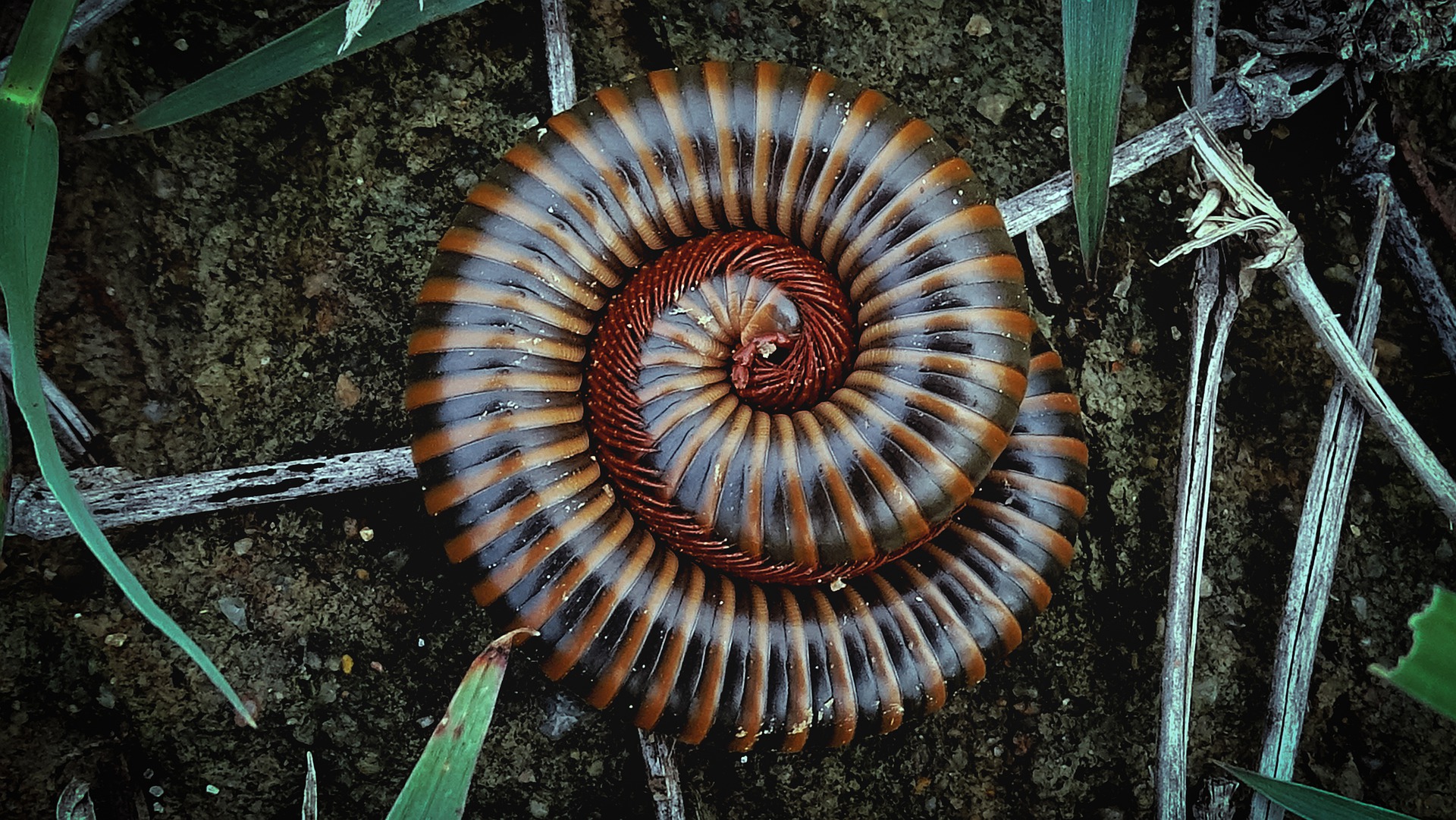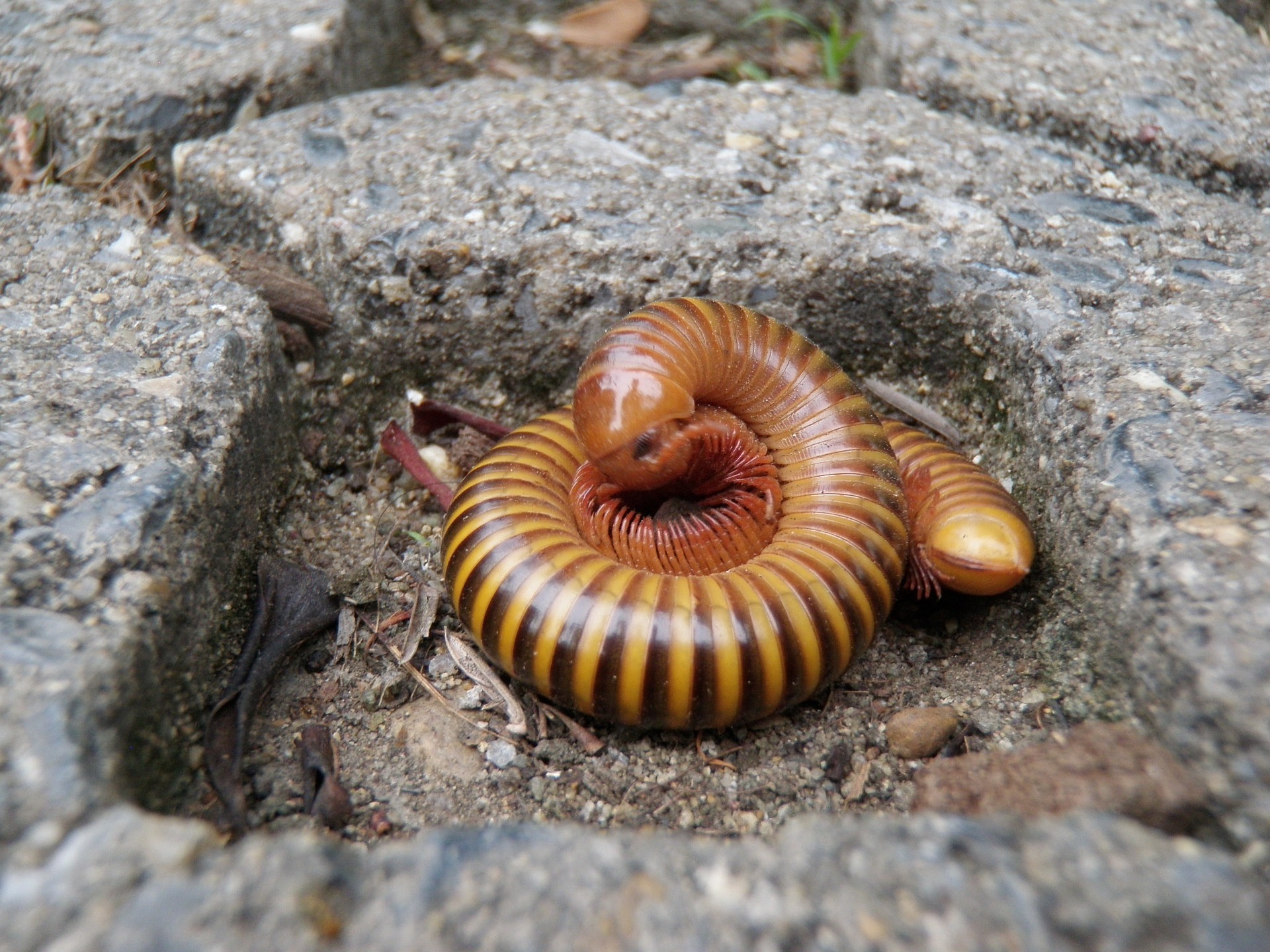Giant millipedes are strange and wondrous creatures. At first glance they may look similar to a centipede, but they couldn’t be more different. Unlike centipedes, millipedes are gentle, slow-moving, docile creatures that pose no threat to anything or anyone. They are herbivores, and feed only on decaying plant matter, such as fallen leaves, logs, and fruit.

Giant millipedes are an informal subset of millipedes that includes quite a few different species. It refers to a wide range of particularly large species of millipedes, many of which are commonly kept as pets.
Millipedes are arthropods, rather than insects (which are a separate, related group). Arthropods are a large group (or “phylum”) of invertebrate animals that includes crustaceans, arachnids, insects, and myriapods. Both millipedes and centipedes fall into the myriapod category.
Millipedes are among the very oldest of all land animals, first appearing roughly four to five hundred million years ago during the Silurian period. These ancient creatures were walking around on dry land before nearly any other type of animal.
How Big are Giant Millipedes?
The most obvious distinguishing feature of giant millipedes compared to more common varieties is their size. But just how big do they get exactly? The largest of these creatures can grow to well over a foot in length!
Most species grow to a length of about four to six inches, but even the “smaller” varieties can still grow several inches long.
How Many Legs?
The most unique physical characteristic of millipedes is of course the incredible number of legs they have. Even though their name would suggest they have 1,000 feet (“milli” meaning 1,000 in Latin), this is not actually true. No known species of millipede actually has 1,000 feet.
The current record holder is a small species called Illacme plenipes, found in California. With up to 750 legs it has not only the greatest number of feet of any millipede, but the greatest number of any species of animal on earth.
Most millipedes however (including the giant ones) have only up to a couple hundred legs, with many species having only around one hundred or less.
A World of Colors
Giant millipedes come in a wide variety of colors. While many species have simple, dull, black or brown coloring, many others have striking, beautiful colors and striped patterns.

The Giant African Millipede for example has a simple, dignified solid black (or dark brown) exterior, while the Bumble Bee Millipede on the other hand has a mesmerizing bright yellow and black striped pattern.
Learn about some of the different species of giant millipedes to discover what makes each unique and interesting.
What do Giant Millipedes Eat?
Basically all millipedes (including the giants) are herbivorous detritivores, meaning that they feed on decaying plant matter. This can include decaying leaves, fallen fruit, or rotten logs and stumps. They are not at all carnivorous (unlike their cousins the centipedes) and do not hunt.
Because they are not predators, and have few natural predators of their own, they do not have the ability to run quickly. Instead they leisurely meander across the forest floor or over logs until they find something to eat.
Where do Giant Millipedes Live?
Giant millipedes are found in many forest environments across the planet, on all continents except Antarctica. From the Amazon, to the forests of the US and Canada, and to tropical jungles in southeast Asia, various species of giant millipedes can be found throughout a very wide range of locations.
No matter the location though, most of these fascinating arthropods tend to stick to similar sorts of conditions and roles, inhabiting the forest floor, beneath the undergrowth. They prefer to stay in the shade, out of direct sunlight. Interestingly though, there are a few species that live in deserts.
Most species like relatively high humidity and temperatures in the 70 F to 80 F (21 C to 27 C) degree range.
If you want to keep giant millipedes yourself, you should first learn about how to properly house these creatures.
Keeping Giant Millipedes As Pets
If you’re looking for a very unique and interesting arthropod to keep as a pet, giant millipedes can make a great choice! They’re easy to care for, docile, and harmless. They’re slow moving, non-venomous, and don’t bite.
With a properly setup environment for them to thrive in, they can be an incredibly interesting creature to keep in your home. As you learn more about these animals, you can decide for yourself if they would make good pets for you.
